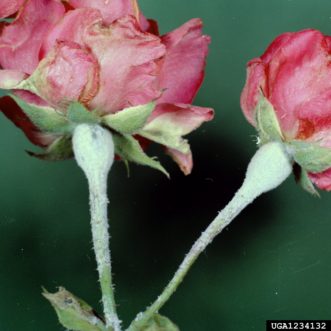Powdery Mildew Is Back
go.ncsu.edu/readext?872511
en Español / em Português
El inglés es el idioma de control de esta página. En la medida en que haya algún conflicto entre la traducción al inglés y la traducción, el inglés prevalece.
Al hacer clic en el enlace de traducción se activa un servicio de traducción gratuito para convertir la página al español. Al igual que con cualquier traducción por Internet, la conversión no es sensible al contexto y puede que no traduzca el texto en su significado original. NC State Extension no garantiza la exactitud del texto traducido. Por favor, tenga en cuenta que algunas aplicaciones y/o servicios pueden no funcionar como se espera cuando se traducen.
Português
Inglês é o idioma de controle desta página. Na medida que haja algum conflito entre o texto original em Inglês e a tradução, o Inglês prevalece.
Ao clicar no link de tradução, um serviço gratuito de tradução será ativado para converter a página para o Português. Como em qualquer tradução pela internet, a conversão não é sensivel ao contexto e pode não ocorrer a tradução para o significado orginal. O serviço de Extensão da Carolina do Norte (NC State Extension) não garante a exatidão do texto traduzido. Por favor, observe que algumas funções ou serviços podem não funcionar como esperado após a tradução.
English
English is the controlling language of this page. To the extent there is any conflict between the English text and the translation, English controls.
Clicking on the translation link activates a free translation service to convert the page to Spanish. As with any Internet translation, the conversion is not context-sensitive and may not translate the text to its original meaning. NC State Extension does not guarantee the accuracy of the translated text. Please note that some applications and/or services may not function as expected when translated.
Collapse ▲‘Tis the season. Powdery mildew is back, particularly on ornamentals like roses and crape myrtle. It is a common occurrence in spring as the weather warms. Unlike many other fungal diseases, powdery mildew does not require moisture on the surface of a plant to infect it or to reproduce. However, certain conditions do play a crucial role in its onset and spread. As the saying goes, ‘it ain’t the heat, it’s the humidity’.
Powdery mildew is not a singular disease, but a group of diseases caused by several closely related fungi. It is common among lots of plants, but different species of fungi have a limited host range. Powdery mildew on phlox may not be the same type that affects vegetable plants like squash. Spores produced in spring are dispersed and come into contact with a suitable host. When environmental conditions become favorable, these spores are spread by wind and rain to other plants. High levels of humidity are required and the disease becomes more problematic when days are cool and nights are warm and humid. Temperature is less of a factor as the disease begins to decline during summer heat. And we all know we can have some summer heat around here.
A symptom commonly associated with powdery mildew is a grayish-white substance visible on leaves and stems and sometimes on flower petals. As the fungi develop over the plant surface, a general decline in the health and vigor of the plant may occur. Leaves can curl and become dwarfed or distorted. The disease may cause flowers to develop abnormally or they may fail to open.
fungi develop over the plant surface, a general decline in the health and vigor of the plant may occur. Leaves can curl and become dwarfed or distorted. The disease may cause flowers to develop abnormally or they may fail to open.
Powdery mildew is favored by cool, moist, shady conditions. If possible, choose resistant varieties of plants. Locate susceptible plants in sunny areas with good air circulation. Avoid excessive fertilization or overirrigation that will stimulate new growth which is most affected. Prune out infected plant parts before the disease has a chance to spread. The disease can overwinter, so rake up and destroy plant debris to lessen the chances of it redeveloping next spring. If the use of fungicides should become necessary, read the label to ensure it can be applied on your specific plants. Follow label directions carefully as some fungicides should not be used above certain temperatures. To read more on powdery mildew, go to hgic.clemson.edu/factsheet/powdery-mildew/
It is time for powdery mildew to rear its ugly head. It is usually not considered a fatal disease, but considerable damage can occur if it is severe enough. Preventative measures like proper location and light requirements are more effective than curative ones. Soon we will begin to feel that summer heat and powdery mildew will be on the wane. If you were lucky enough to have avoided it this spring, you can look for it again when the weather begins to cool in late summer and early fall. ‘Tis the season, part ll.
Gail Griffin is an Extension Master Gardener Volunteer with North Carolina Cooperative Extension in Lee County.




